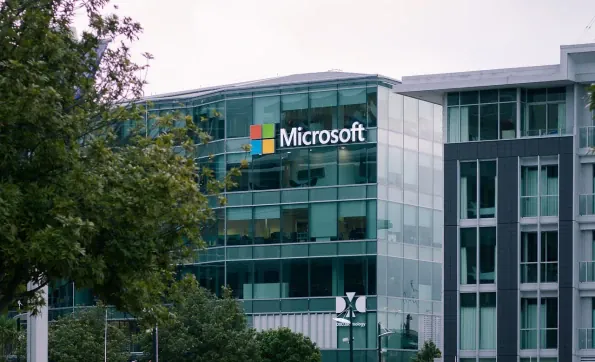Ransomware and other cyber threats are increasingly common in today’s digital landscape, making robust cybersecurity measures essential. As a widely used enterprise productivity platform, Microsoft 365 is a major target for cyber-attackers, especially ransomware. According to reports, 76% of businesses have faced at least one attack in the past year, leading to disrupted operations, financial losses, and reputational damage. The substantial amount of sensitive data processed and stored on Microsoft 365 daily makes it particularly vulnerable. This article delves into the cybersecurity landscape of Microsoft 365, examining ransomware threats and effective strategies to enhance cyber resilience and protect sensitive data.
Zero Trust and Least Privilege
The Zero Trust model operates on the principle of “never trust, always verify,” reflecting the current security landscape’s complexity. It assumes threats can emerge from both inside and outside the network, not inherently trusting any entity on either side. This model aligns with the principle of least privilege, which limits user access rights to the minimum necessary to perform their job functions. In the context of Microsoft 365, this translates into rigorous identity and device verification processes, such as multi-factor authentication (MFA) and Identity and Access Management (IAM).
Isolating workloads helps contain potential breaches and mitigate their impact by granting access based on the minimum rights needed for job functions. This reduces the risk of insider threats and minimizes damage should user credentials be compromised. Additionally, implementing strict privilege management systems and adopting a zero-trust architecture significantly strengthens an organization’s overall security posture. It not only aligns with stringent regulatory requirements but also safeguards sensitive data against unauthorized access and breaches.
Organizations adopting a zero-trust approach are likely to experience enhanced protection measures. They necessitate robust identity verification processes, rigorous access control mechanisms, and continuous monitoring to identify potential threats. By ensuring users only access the resources necessary for their roles, the risk associated with compromised credentials is substantially lowered. These measures collectively contribute to a fortified cybersecurity environment within Microsoft 365, discouraging potential threats from taking root and proliferating within the network.
Regular and Immutable Backups
Regular backups are vital for any cybersecurity strategy and are crucial for recovery and business continuity after data loss incidents. Since ransomware is designed to encrypt or delete backups, immutable backups become essential. These backups cannot be altered or deleted during a defined retention period, ensuring organizations can restore their systems without paying ransom demands. For Microsoft 365 users, cloud-native backup and storage services provide an easy and effective way to protect backup data.
Immutable backups offer a critical defense mechanism against ransomware attacks. Considering the statistic that 96% of ransomware attacks in 2024 targeted backup repositories, having unalterable backup data is paramount. These backups make it nearly impossible for attackers to disrupt recovery efforts, thereby preventing the organization from yielding to ransom demands. Knowing that data recovery is assured through reliable backups, organizations can maintain operational continuity and mitigate downtime significantly.
Furthermore, backup strategies should be supported by automated and routine backup schedules that guarantee data preservation with minimal manual intervention. Ensuring that backup data is tested and verified regularly confirms its integrity and accessibility in crisis scenarios. Regularly evaluating and improving backup solutions ensure they evolve alongside emerging cyber threats, providing resilient and adaptive defensive mechanisms against evolving ransomware tactics.
Incident Response and Regular Audits
A well-structured incident response plan allows organizations to respond quickly and effectively to cyber incidents. Regular security audits are crucial for identifying and addressing vulnerabilities within the Microsoft 365 ecosystem before attackers exploit them. Thorough and recurring audits evaluate all aspects of Microsoft 365, from user permissions to data access controls. Regular penetration testing, simulating real-world attacks, tests the effectiveness of existing security measures.
Audits can reveal excessive user permissions or outdated systems, supporting a robust incident response framework that reduces potential damage during genuine breaches. Identifying vulnerabilities early can prevent exploitations that may lead to significant data breaches or operational disruptions. Incident response plans should be clear, detailed, and practiced regularly to ensure all stakeholders know their roles and responsibilities. This preparedness minimizes confusion and accelerates response times when an actual cyber incident occurs.
Employing comprehensive monitoring, coupled with proactive audit processes, ensures that security measures remain robust and adaptive to new threats. By routinely scrutinizing system configurations, access controls, and user activities, potential weaknesses are continuously identified and rectified. This continuous improvement cycle fortifies the organization’s cybersecurity defenses and cultivates a proactive security culture across all levels. Effective incident response and regular audits underscore a foundationally sound, dynamically reactive, and progress-oriented cybersecurity strategy for Microsoft 365.
Software Restriction Policies and Monitoring
Software Restriction Policies (SRPs) minimize the attack surface by controlling software execution on corporate systems. For Microsoft 365, SRPs prevent unauthorized or malicious programs from running, potentially bypassing other security measures. Continuous monitoring and comprehensive logging complement SRPs, detecting and responding to incidents in real time. Real-time monitoring alerts administrators to unusual activities indicating a breach, such as unexpected data access or anomalous login attempts.
Diligent logging records every action, providing a clear audit trail for post-incident analysis and preventing future attacks by understanding previous attack vectors and tactics. These logs are invaluable for diagnosing the scope and impact of an attack, enabling swift corrective actions. The logs can also provide critical insights into recurring vulnerabilities or frequently targeted network segments, guiding further enforcement of security measures precisely where needed. Combined, SRPs and real-time monitoring create a reactive and preemptive defense paradigm within the Microsoft 365 ecosystem.
Moreover, integrating behavioral analytics with monitoring frameworks can elevate threat detection capabilities. Recognizing and flagging deviations from established usage patterns can preempt illicit activities, allowing for prompt intervention before threats escalate. This, along with maintaining rigorously updated system policies and restricting program execution to trusted software, consolidates a fortified shield against cyber adversaries. Implementing these measures assures administrators of a resilient security infrastructure capable of countering sophisticated ransomware threats effectively.
Data Protection and Encryption
Data encryption is a foundational cybersecurity measure that renders data unreadable to unauthorized users. In Microsoft 365, robust encryption strategies must encompass data at rest and in transit, aligning with compliance requirements. Advanced encryption solutions combined with other security tactics protect sensitive information’s integrity and limit data exposure during breaches. Separating highly sensitive data into different storage containers with distinct access controls reduces the risk of mass data exposure in a breach.
Incorporating encryption into everyday data interactions within Microsoft 365 ensures that even if a breach occurs, the stolen data remains unusable and unintelligible without the decryption keys. Ensuring encryption protocols align with industry standards and regulatory compliances further fortifies the organization’s defense layers against ransomware and other cyber threats. Such measures contribute to maintaining confidentiality, securing business-critical information, and fostering stakeholder confidence in data protection practices.
Access controls tailored to different sensitivity levels of data enforce an additional security tier, whereby only authorized users gain access based on their roles and needs. This compartmentalization reduces the risk of widespread data exposure and ensures information integrity. Coupled with encryption, these access policies ensure that sensitive data remains secure even if part of the network is compromised. The combined approach of encryption and strict access control underscores a comprehensive defense mechanism that addresses both internal and external threat vectors.
The Necessity of Microsoft 365 Cyber Resilience
Ransomware and other cyber threats have become increasingly prevalent in our digital world, making strong cybersecurity measures more crucial than ever. Microsoft 365, as a widely utilized enterprise productivity platform, is a significant target for cybercriminals, particularly those using ransomware. Recent reports indicate that 76% of businesses experienced at least one cyberattack within the past year. These incidents result in disrupted operations, financial setbacks, and damage to reputations. The enormous volume of sensitive data processed and stored on Microsoft 365 daily further accentuates its vulnerability. This article explores the cybersecurity landscape of Microsoft 365, specifically focusing on ransomware threats. It also outlines effective strategies to fortify cyber resilience and safeguard sensitive information. Understanding and implementing these approaches are vital for organizations looking to protect their data and maintain operational integrity in an increasingly hostile cyber environment.













